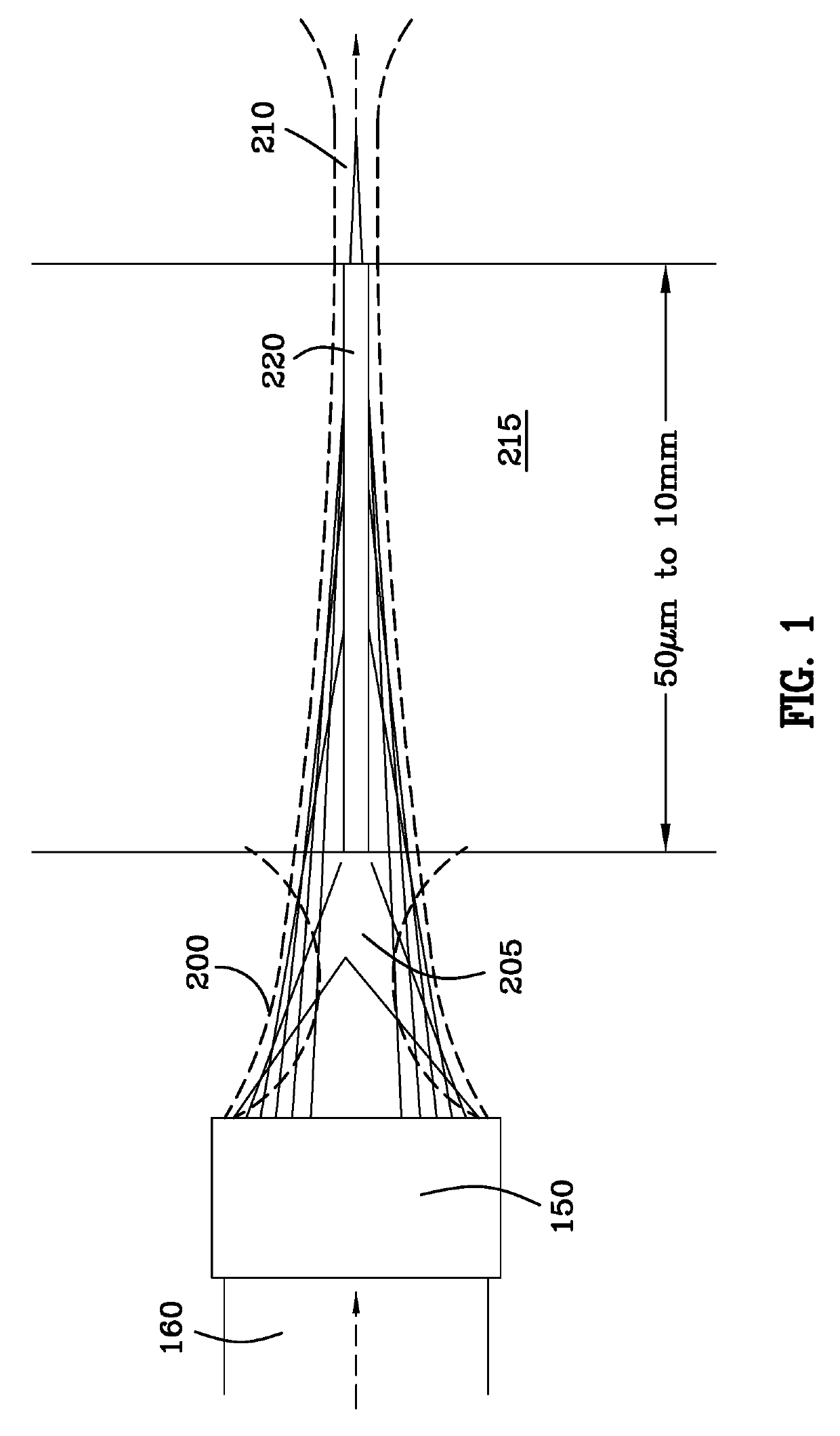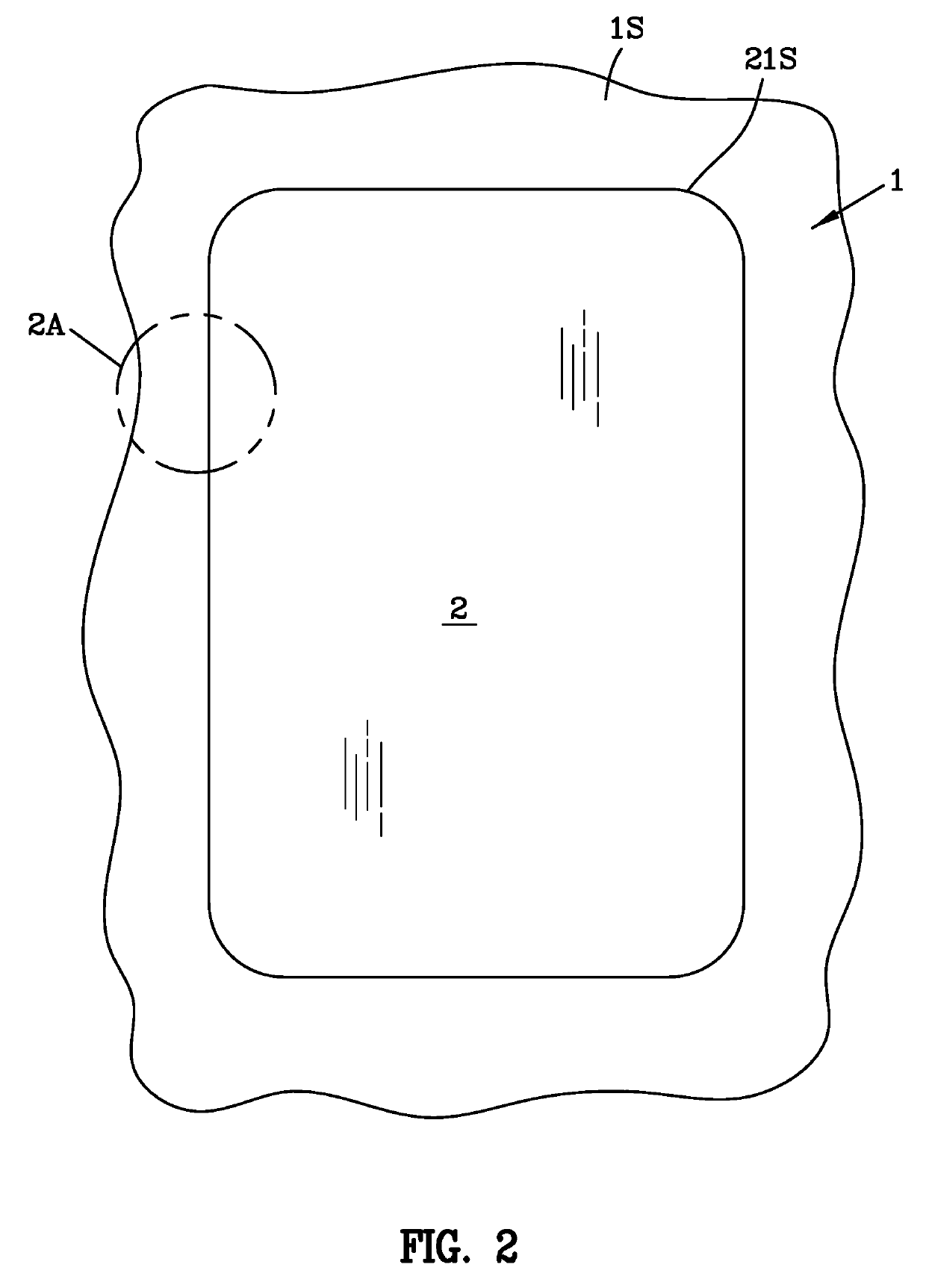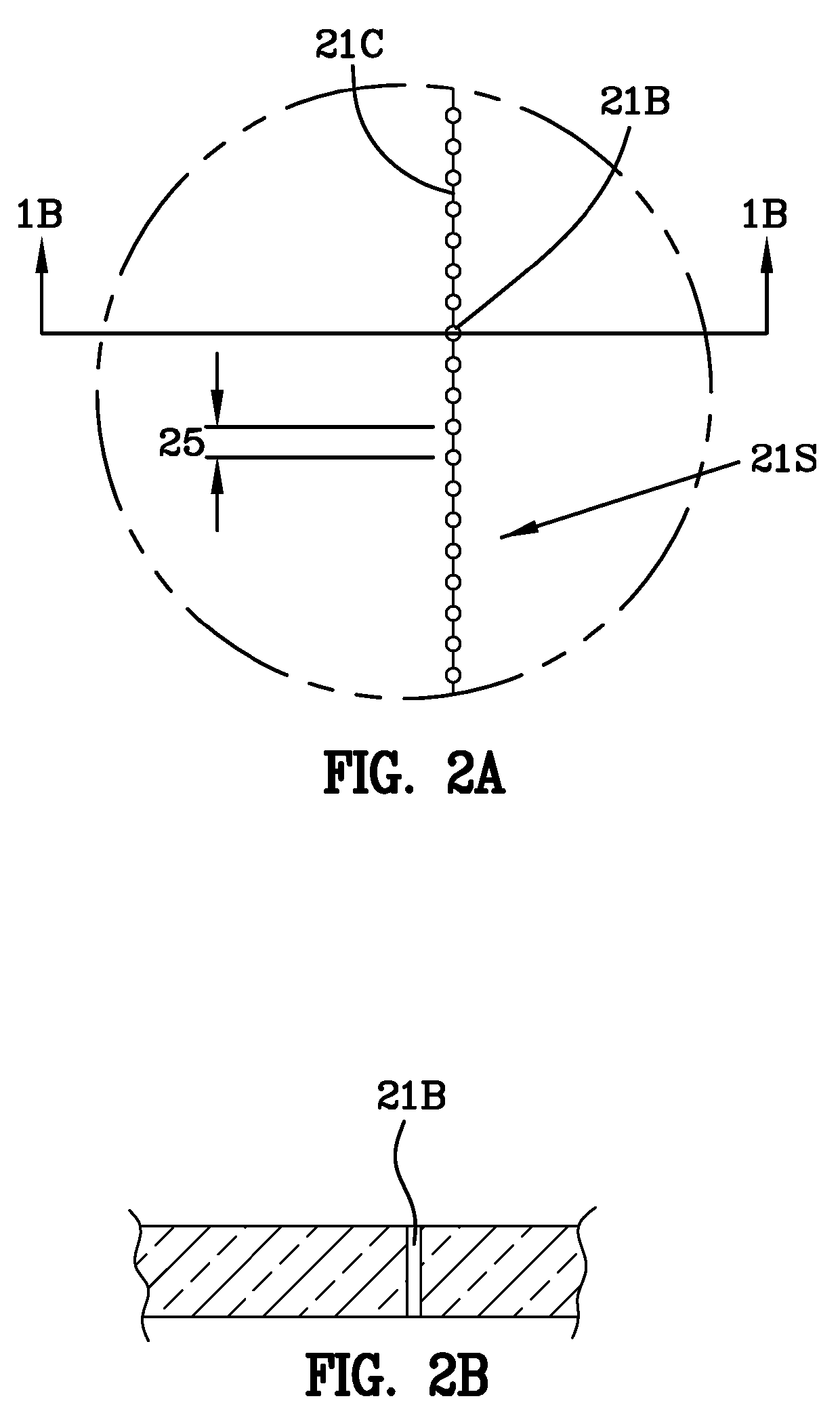Method and system for scribing brittle material followed by chemical etching
a technology of chemical etching and brittle materials, applied in the direction of manufacturing tools, welding/soldering/cutting articles, layered products, etc., can solve the problems of increased production cost, increased cleaning and polishing steps, and poor quality edges, so as to avoid damage to the metal layer
- Summary
- Abstract
- Description
- Claims
- Application Information
AI Technical Summary
Benefits of technology
Problems solved by technology
Method used
Image
Examples
Embodiment Construction
[0079]Embodiments of the disclosure will now be described by way of example only.
[0080]FIG. 1 illustrates optical configurations for the formation of filaments in which long homogeneous filaments 220 are formed by focusing the beam energy such that it is “dumped” into a focus above and / or below the transparent target material (forming an optical reservoir 220) in order to modulate the amount of energy passed into the desired filament zone. Incoming laser beam 160 passes through a distributed focus assembly 150 which creates foci above or below 210 the target substrate 215.
[0081]The propagation of ultrafast laser pulses in transparent optical media is complicated by the strong reshaping of the spatial and temporal profile of the laser pulse through a combined action of linear and nonlinear effects such as group-velocity dispersion (GVD), linear diffraction, self-phase modulation (SPM), self-focusing, multiphoton / tunnel ionization (MPI / TI) of electrons from the valence band to the con...
PUM
| Property | Measurement | Unit |
|---|---|---|
| length | aaaaa | aaaaa |
| width | aaaaa | aaaaa |
| speeds | aaaaa | aaaaa |
Abstract
Description
Claims
Application Information
 Login to View More
Login to View More - R&D
- Intellectual Property
- Life Sciences
- Materials
- Tech Scout
- Unparalleled Data Quality
- Higher Quality Content
- 60% Fewer Hallucinations
Browse by: Latest US Patents, China's latest patents, Technical Efficacy Thesaurus, Application Domain, Technology Topic, Popular Technical Reports.
© 2025 PatSnap. All rights reserved.Legal|Privacy policy|Modern Slavery Act Transparency Statement|Sitemap|About US| Contact US: help@patsnap.com



